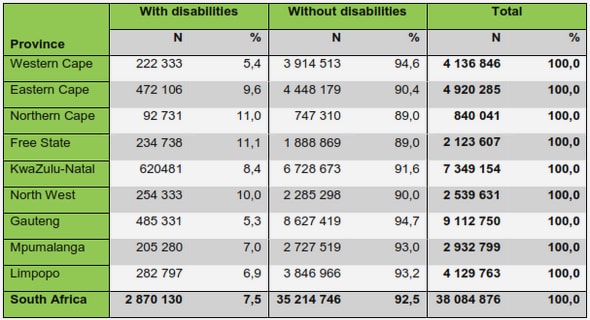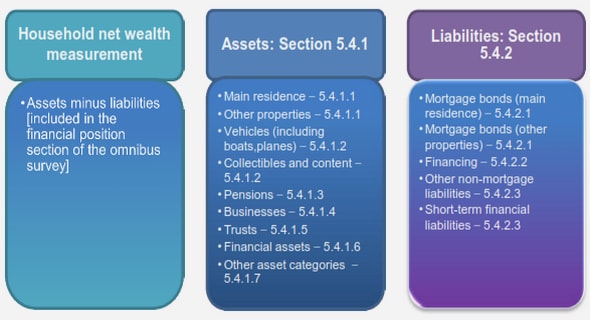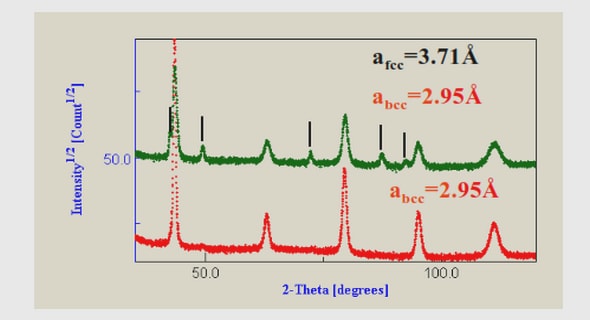Get Complete Project Material File(s) Now! »
Chapter Three Cosmopolitanism and Migration Studies
Introduction
Cosmopolitanism has been recently revitalised across social sciences and humanities, primarily as a means of addressing new forms of experience and sociability produced in this increasingly mobile and interconnected world (Glick Schiller, Darieva, and Gruner-Domic 2011; Jones 2013; Wang and Collins 2016a). As Skey (2013, 235) points out, cosmopolitanism has become a subject of renewed interest to ‘theorise processes of interaction and imagination that extend beyond local or national contexts’. In most cases, the re-emergence of cosmopolitanism has been closely associated with the concepts of globalisation, multiculturalism and international migration (Beck and Sznaider 2006; Mau, Mewes, and Zimmermann 2007; Nowicka and Rovisco 2009; Yeoh 2013).
This chapter highlights the significance of using cosmopolitanism as a theoretical framework within migration studies and explores the way cosmopolitanism provides fresh insight into the behaviours, values and dispositions among migrant individuals. Specifically, the chapter begins with a comprehensive review of the major scholarship and ideas of cosmopolitanism, particularly emphasising the importance of the writings of Vertovec and Cohen (2002) and Woodward and Skrbis (2012). Then the focus shifts to analysing the major shifts in theoretical frameworks within migration studies—a move from methodological nationalism to transnationalism, and then to an emerging focus on cosmopolitanism. At the same time, the chapter illustrates why cosmopolitanism can be used as an effective research approach to explore migration experiences.
Drawing on relevant literature of ‘rooted cosmopolitanism’, ‘everyday cosmopolitanism’, and ‘emotions and cosmopolitan sociability’, the next section of this chapter develops three research entry points on which I shall build the theoretical framework for this research. The first two entry points propose moving beyond labelling people merely as ‘cosmopolitans’ or ‘non-cosmopolitans’, and instead explore how cosmopolitanism interacts or competes with rootedness and/or nationalistic views, and how socio-demographic characteristics (e.g. age, class, education) may facilitate or act as a barrier to the formation and development of everyday cosmopolitan engagements. This section also engages with scholarship that has started to take a close look at the emotional trajectories accompanying migratory movements, exploring how emotional dynamics shape migration journeys and vice versa. My research builds on this work to develop a third entry point that explores the emotional dimensions of engaging in cosmopolitanism and conducting cosmopolitan sociability, drawing attention to the way that emotions encourage but also limit the capacity to build intercultural relations.
Mapping the idea of cosmopolitanism
As many commentators have noted, cosmopolitanism has undergone a rejuvenation and resurgence in the last few decades, which owes much to the debate sparked by Nussbaum’s (1994) polemical essay on patriotism and cosmopolitanism. Cosmopolitanism has not been only used to explore the radical projections of cosmopolitan democracy (Held and Archibugi 1995) and cosmopolitan citizenship (Hutchings and Dannreuther 1999), but also been increasingly seen as a valuable tool for rethinking international migration and transnational mobilities (Chan 2005; Hiebert 2002; Inglis 2014; Yeoh 2013). More recently, for a number of scholars, cosmopolitanism has been closely associated with globalisation (Beck and Sznaider 2006; Olofsson and Öhman2007; Roudemetof 2005) and has become an important theoretical endeavour which mainly focuses on questions related to mobilities, migrations and transnationalism. Moreover, some scholars have started to apply cosmopolitanism to examine the transformative implications and influences of social engagements across cultural, geographic and social borders (Mau, Mewes, and Zimmermann 2007; Glick Schiller, Darieva, and Gruner-Domic 2011; Woodward and Skribs 2012).
This section firstly makes it clear that my research seeks to transcend the Eurocentric framework of cosmopolitanism. Secondly, drawing on the research of Vertovec and Cohen (2002), it claims that my research focuses on the empirical and analytical dimension of cosmopolitanism, and argues that becoming cosmopolitan requires not only the development of cosmopolitan orientations or attitudes but, more importantly, demands engagements with a set of cosmopolitan practices in everyday life. Lastly, building on the research of Woodward and Skrbis (2012), this section unpacks how cosmopolitanism is perceived, defined, and utilised as a theoretical and analytical tool in my research.
Transcending Eurocentrism
Cosmopolitanism is first of all a political-philosophical concept with a strong ethical component, and its fundamental meaning is that all human beings, regardless of their ethnic or other affiliations, belong to a single, overarching social community (Delanty 2006). Delanty (2006, 26) further states that cosmopolitanism is of political significance once it is linked to peoplehood, although it is originally a moral concept that requires individuals to develop ‘allegiances to the wider world’. In this regard, modern intellectual discussions of cosmopolitanism have mainly centred on the philosophy of Immanuel Kant who ‘sought to extend republican political philosophy into a wider and essentially legal framework beyond the relatively limited modern republic’ (Delanty 2006, 26). According to Stevenson (2002), Kant arguably reintroduced cosmopolitanism in proposing that ‘the laws of nations should be replaced with a ‘genuinely morally binding international law’ to obtain a vision of ‘peaceful cosmopolitan order’. Kant’s cosmopolitan philosophy urges humans to become ‘citizens of the world’ and advocates a creation of a ‘worldwide community of humanity’ defined by commitment to ‘common human values’ (Vertovec and Cohen 2002, 10).
However, as Mendieta (2009) has noted, Kant’s ideas on cosmopolitanism tend to be relatively Eurocentric and deny the contributions of other cultures. He identifies numerous points throughout Kant’s corpus that strongly reflect how he considered white Europeans ‘the most developed instantiation of humanity’, and ‘how Western institutions represented the fulfilment of the plan of nature and the highest accomplishment of what human make of themselves through the enlightened use of reason’ (Mendieta 2009, 247). Hence Mendieta (2009) argues that in order to remove the effects of European racism and the dehumanising colonial mindset, scholars need to go beyond Kant’s ideas on cosmopolitanism.
To date, most scholars have approached cosmopolitanism within the confines of Western thought and identified the emergence and development of cosmopolitanism among Western people (Mau, Mewes, and Zimmermann 2006; Pagden 2000). That is to say, the wider academic literature on cosmopolitanism has tended to associate ‘being cosmopolitan’ (as a practice) with being in the West and ‘cosmopolitanism’ (as an idea) with being of the West (Bhambra 2010; 2011). Anthony Pagden, for example, writes:
It is hard to see how any form of ‘cosmopolitanism’ can be made to address the difficulties of the modern world if it does not in some sense begin where Kant and the Stoics … began, that is with some vision of a community of ‘the wise’ whose views must in the end triumph … In the modern world it is equally hard to see, at least in the immediate future, that those views can be anything other than the reflection of the values of Western liberal democracies’ (2000, 19; cited in Bhambra 2011, 2).
As Bhambra (2011, 2) argues, ‘this is a parochial reading of cosmopolitanism which betrays the very ideals that the concept expresses’. I agree with Bhambra’s (2011) comments, and I argue that the opinions of scholars like Pagden essentially involve a refusal to acknowledge that cosmopolitan practices and the development of cosmopolitan ideas have emerged in or been influenced by other parts of the world outside of the West.
The concept of cosmopolitanism has had a paradoxical fate (Delanty 2014). On the one hand, cosmopolitism has undoubtedly been a product of classical European thought, and it has been mainly understood and used under a framework of Eurocentrism (Beck 2006; Beck and Grande 2007). On the other hand, the idea of cosmopolitanism has increasingly been seen as relevant to the historical experiences of non-European cultures, and the practices of this idea have been identified in a non-Eurocentric context, which reflects a certain self-questioning of Eurocentrism (Bhambra 2011; Datta 2011; Werbner 1999, 2008). In that sense, as Delanty (2014, 374) has argued, cosmopolitanism has become ‘cosmopolitanised’, but it is still limited in terms of global relevance due to its privileged Western genealogy and the influence this has on its theoretical contours.
According to Delanty (2014), transcending the Eurocentric frame of cosmopolitanism requires both a de-centring of dominant understandings of cosmopolitanism and an acknowledgement of understandings of cosmopolitanism outside of the otherwise canonical frame of reference exemplified by European thought and practice. Literature that explores the practices of cosmopolitanism in non-Western societies is of great significance to the development of non-Eurocentric social science (Delanty 2014). For example, Lamont and Aksartova (2002) explored the cosmopolitan engagements amongst workers who are of diverse ethnic and cultural backgrounds. Their research was a deliberate effort to choose a group of people who are not situated in a privileged or globally mobile setting in the West. Similarly, Werbner’s (1999) work focuses on the class dimension of transnational mobility of Pakistani Sufis and working-class Pakistani ‘cosmopolitans’. Both of these important studies demonstrated that cosmopolitanism has emerged, developed and been identified in a non-European context and it does not necessarily only exist in the exclusive domain of Western middle-class groups.
The idea of cosmopolitanism also finds roots in Confucianism in Eastern philosophy and history in ways that have specific relevance to this research. From early dynastic times, ‘tianxia’ (天下), a Confucian concept meaning literally ‘all under heaven’14, was used to denote either the entire geographical world or the metaphysical realm of mortals (Xu 2013). Associated with political sovereignty, its importance can be seen in its role in the preservation of a unified Chinese territory and in the integration of the Chinese people under central imperial rule. Similar to what cosmopolitism means to Kant, ‘tianxia’ indicates a universalising spirit that is not contained or broken up by borders, unlike the nation-state. While differences between peoples were recognised, if they embraced the central kingdom’s civilizational complex, then they could become part of ‘tianxia’ (Rofel 2012). That is to say, ‘all under heaven’ refers to an extended notion of the world where harmony, communication and cooperation exist between everyone. But to achieve this, everyone ‘under heaven’ needs to be submissive to hierarchy and to abide by the regulations and orders formulated and advocated by the dominant central kingdom. The concept of ‘tianxia’ has also been independently applied by other countries in the East Asian cultural sphere, including Japan, Korea, and Vietnam.
In a larger sense, the concept of ‘tianxia’, is closely associated with civilisation and order in classical Chinese philosophy, and has formed the basis for the dominant world view expressed in China and nations influenced by it since at least the first millennium BC. Rofel (2012) has argued that while the ideology of ‘tianxia’ centred this world, Chinese people had successfully incorporated a set of cultural beliefs, customs and values from other parts of the world, such as Buddhism and mathematics, as well as foods, dress, aesthetics and architectural design. Furthermore, Chun (2012) has pointed out that Chinese cosmopolitanism, with its core value of ‘tianxia’, symbolises the Chinese people in their acknowledging of the wider geographic world and developing universal values over more than two thousand years.
The detailed development of the above-mentioned ethical, political or philosophical debates over cosmopolitanism, whether from Kant in the West or from the Chinese concept of ‘tianxia’ in the East, are beyond the scope of my research. However, it does have relevance in terms of what these claims mean for lived experiences of cosmopolitanism. Indeed, much of the social scientific discourse has assumed the notion of cosmopolitanism to be a moral and political standpoint, a shared normative–philosophical commitment to the primacy of world citizenship over all national, religious, cultural, ethnic and other parochial affiliations. By contrast, and building on a potentially more variegated conception of cosmopolitanism, my research draws attention to a lived cosmopolitanism at the level of the everyday. With a focus on the empirical and analytical dimensions of cosmopolitanism as a sociological tool, this research explores whether, and how, grounded and down-to-earth cosmopolitan engagements can be utilised by ordinary migrants to negotiate difference and build intercultural relations in their migrant lives. Moreover, my research aims to move beyond the latent Eurocentrism that persists in cosmopolitan thought. In order to achieve that, it not only takes the new Chinese migrants as a case study, but also draws attention to the role played by their rootedness and emotional attachment towards China, Chinese culture and Chinese community during the process of engaging in cosmopolitanism in their everyday lives. Three research entry points have been designed to address these issues, and will be introduced in the third section of this chapter.
The next section of this chapter will introduce specific theories and concepts surrounding cosmopolitanism which are needed to formulate the three research entry points that make it possible to construct the theoretical framework. Before that, however, it is necessary to first understand how the idea of cosmopolitanism is approached and defined in this research. The following two sub-sections will provide a detailed discussion of how cosmopolitanism has been understood as a sociological theory and how it can be utilised as an analytical tool.
Abstract
Acknowledgement
1. Introduction
1.1 Research background and gaps
1.2 Research cohort: new Chinese migrants in New Zealand
1.3 Research questions and theoretical approach
1.4 Research objectives and significance
1.5 Organisation of the thesis
2. New Chinese Migrants in New Zealand: The Desirable Ones?
2.1Introduction
2.2 Migration policies of receiving and sending countries
2.2.1An overview of New Zealand’s immigration policy change and its effects on new
2.3 Profile of the new Chinese migrants in New Zealand
2.4 Imagining a cosmopolitan West
2.5 Conclusion
3. Cosmopolitanism and Migration Studies
3.1Introduction
3.2 Mapping the idea of Cosmopolitanism
3.3 A cosmopolitan gaze towards migration studies
3.4 Three research entry points: Constructing the theoretical framework
3.5 Conclusion
4. Methodology
4.1 Why qualitative in-depth interviews?
4.2 Recruitment, sampling, and participants’ information
4.3 Interview schedule and question design
4.5 The insider-outsider position
4.6 Analysis of research data
4.7 Methodological limitations and solutions
4.8 Conclusion
5. Cosmopolitanism and Everyday Life
5.1Introduction
5.2Everyday Cosmopolitanism
5.3Contact Zones
5.4 Everyday (un)cosmopolitan moments in contact zone
5.5 Barriers for everyday cosmopolitanism
5.6 Performing everyday cosmopolitanism
5.7Conclusion
6. Rooted Cosmopolitanism and Everyday Encounters
6.1Introduction
6.2Rooted Cosmopolitanism
6.3‘Rootedness’ of the new Chinese migrants
6.4 Rootedness towards China
6.5 Rootedness towards New Zealand
6.6 Becoming rooted cosmopolitan?
6.7 Conclusion
7. Emotion, Migration, and Cosmopolitan Sociability
7.1Introduction
7.2 Emotion, migration, and cosmopolitan sociability
7.3 Emotional difficulties in early settlement period
7.4 Emotions and home-making in a transnational context
7.5 Emotional dissonance in everyday encounters
7.6 Conducting cosmopolitan sociability
7.7 Conclusion
8. Conclusions
8.1 The ‘desirable’ migrants and their ‘undesirable’ outcomes
8.2 A ‘rooted’ cosmopolitanism: transcending Eurocentrism
8.3 Everyday cosmopolitanism: uneven encounters with diversity
8.4 Feeling cosmopolitan: The emotional dimension
8.5 Imagining the cosmopolitan West: Have their dreams come true?
8.6 Implications for further research
List of References
Appendices
GET THE COMPLETE PROJECT
Becoming Cosmopolitan? Roots, Emotions, and Everyday Diversity Encounters amongst New Chinese Migrants in New Zealand


